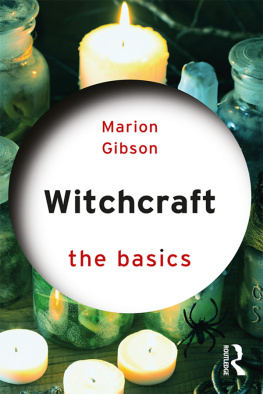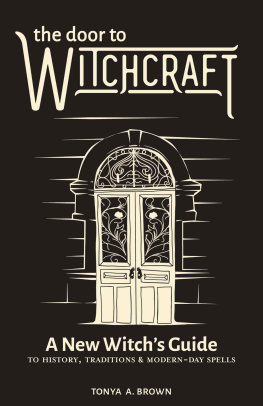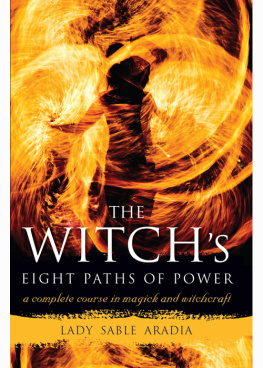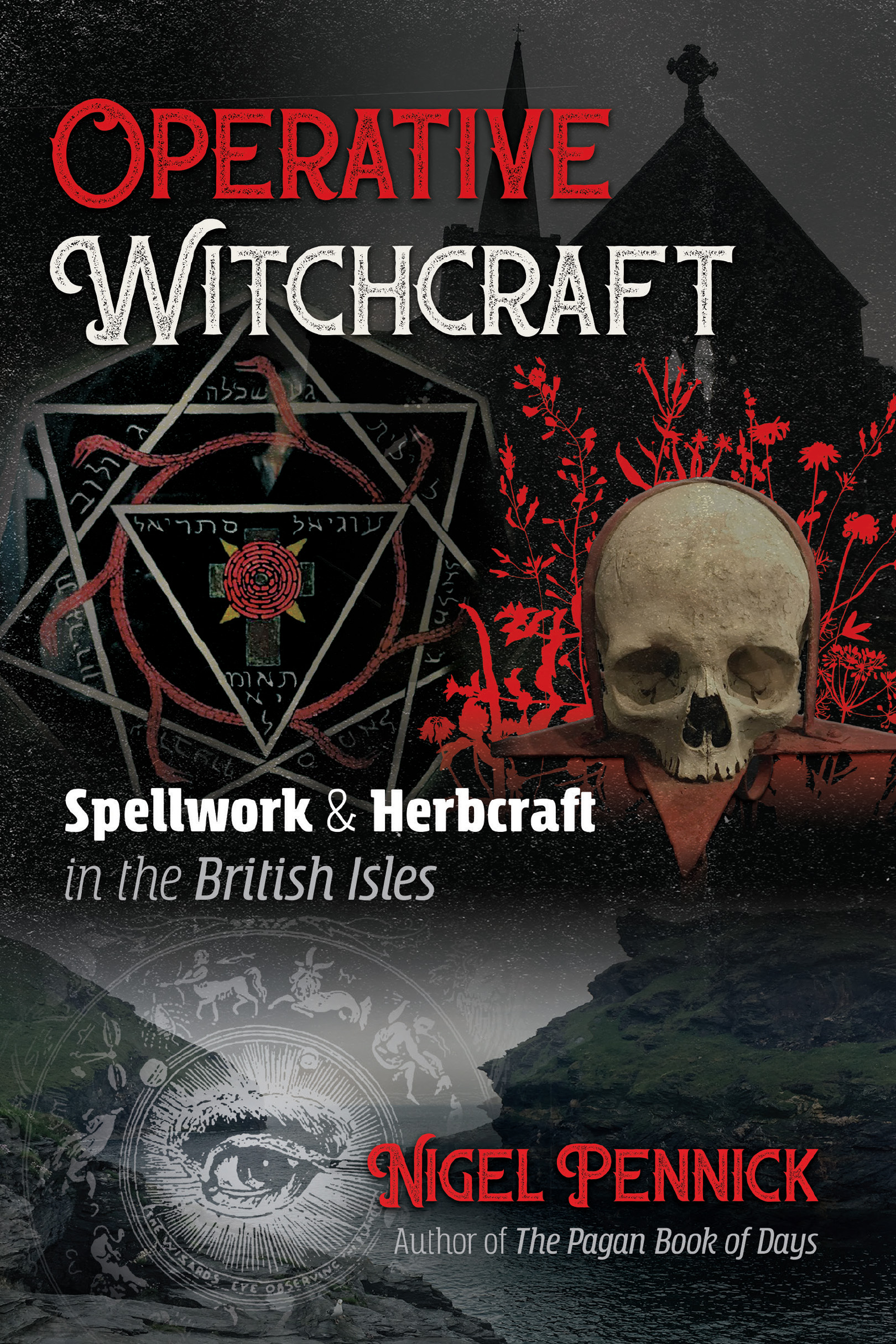
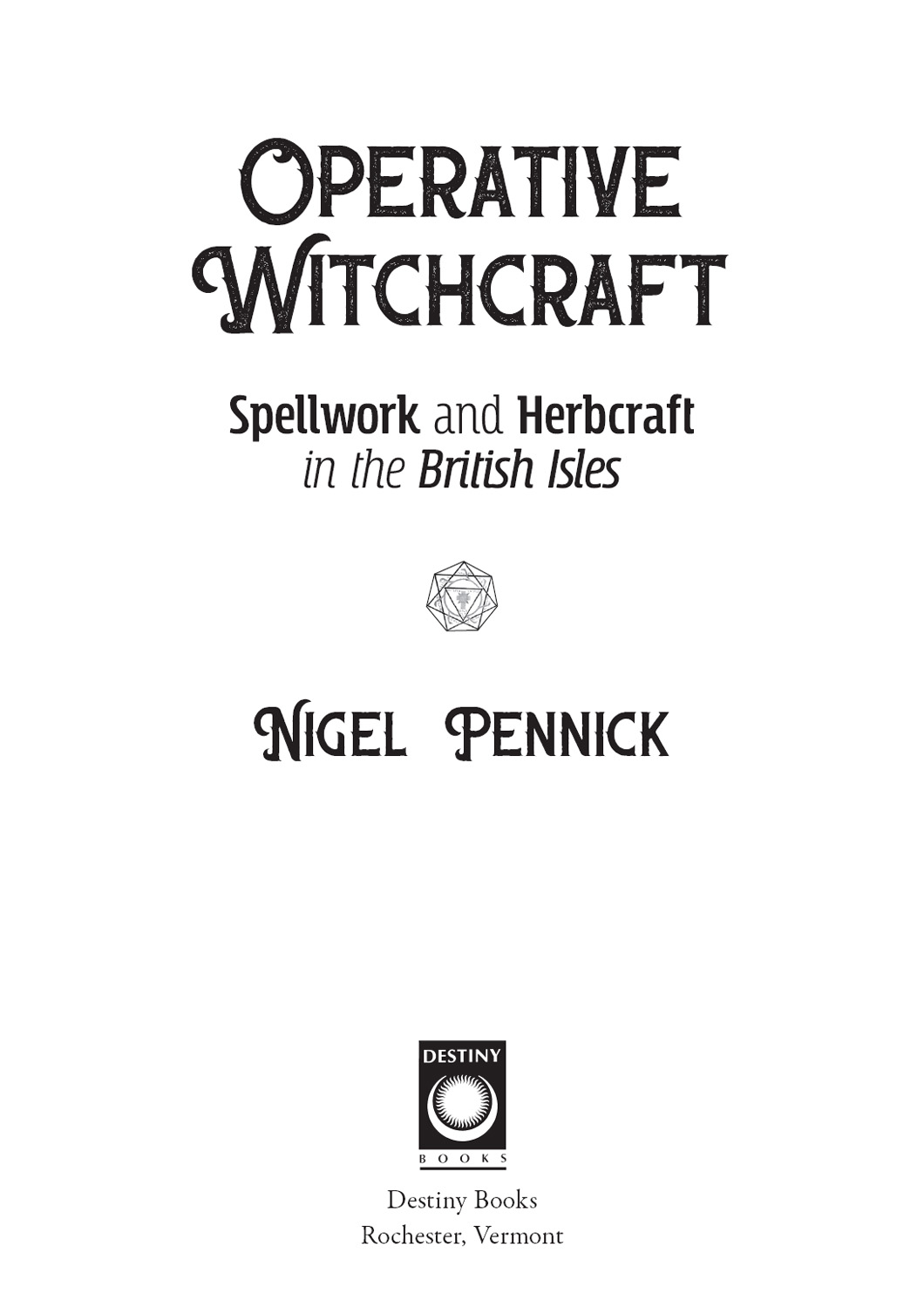
OPERATIVE
WITCHCRAFT

In our postmodern world, appearances often upstage matters of real substance, and people freely adopt new personae as they pleasewitness the plethora of contemporary witches, many of whom share little in common with the sorts of rural figures that bore the name in earlier times. Nigel Pennicks Operative Witchcraft is an unromanticized warts and all survey of the real history and lore of witchcraft in his native England and elsewhere. This treasure trove of seldom-seen material encompasses topics ranging from toadmen and horsemen to weird plants and darker folk traditions, including a fascinating chapter on the syncretic links between British witchcraft and West Indian Obeah religion. One could not ask for a more knowledgeable and sympathetic guide through these shadow-filled realms than Nigel Pennick.
MICHAEL MOYNIHAN, COAUTHOR OF LORDS OF CHAOS AND COEDITOR OF THE JOURNAL TYR: MYTHCULTURETRADITION
Operative Witchcraft is a fascinating, wide-ranging, and detailed work that acknowledges and tackles the complex nature of British witchcraft. The book discusses the powers of the witch, how witches have been portrayed, and the persecution of them through legislation and unofficial violence borne of ancient fears. The comparison with West Indian Obeah highlights the repetition of old patterns of persecution in Britains former colonies. Nigel Pennick has long been a leading authority on this subject, and Operative Witchcraft is another excellent work, shining new light not only on the history of witchcraft but also on how it has been practiced over the centuries. This beautifully written and authoritative work, which is both accessible and academically rigorous, should grace the bookshelves of folklorists, historians, practitioners of witchcraft, and those with a general interest in this enduring aspect of our culture.
VAL THOMAS, HERBALIST, PRACTITIONER OF WITCHCRAFT AND NATURAL MAGIC, AND AUTHOR OF A WITCHS KITCHEN
While most historians of witchcraft have focused on the early modern and Renaissance era (myself included), Pennick goes beyond the great conflagrations of Europe to show how magic and witchcraft survived into the twentieth century. Operative Witchcraft offers one interesting tidbit of forgotten magical history after the nextnot a page went by that I didnt stop and say, Wow! Well written, well researched, a fantastic addition to any witchcraft library.
THOMAS HATSIS, AUTHOR OF THE WITCHES OINTMENT AND PSYCHEDELIC MYSTERY TRADITIONS
Nigel Pennick stands with one leg in the eldritch world and one in the mundane, as all who know him can attest. After a lifetime of dedication to these ancient mysteries, both in theory and in practice, there is no one better qualified to lead the reader through the highways and byways of operative witchcraft.
IAN READ, FORMER EDITOR OF CHAOS INTERNATIONAL AND RNA MAGAZINES, LEADER OF THE RUNE-GILD IN EUROPE, AND FOUNDING MUSICIAN IN THE BAND FIRE + ICE
Yet another generous offering from Nigel Pennick! In Operative Witchcraft, Pennicks extensive knowledge of British folk magic tradition builds a richly furnished mansion from the presumed molehill of its textual and material traces.
DANICA BOYCE, PRODUCER OF FAIR FOLK PODCAST
In this intriguing book, Nigel Pennick gives numerous examples of operative witchcraftwitchcraft as it was actually practiced and documented by earlier researchers. It also includes details of the techniques and practices he personally learned from traditional practitioners over a period of more than forty-five years.
ANNA FRANKLIN, AUTHOR OF THE HEARTH WITCHS COMPENDIUM AND THE SACRED CIRCLE TAROT

THANKS AND CREDITS
To those both living and now departed, for various and sundry assistance over the years, discussions and information that contributed in one way or another to this book, I thank the following: Ivan Bunn, Michael W. Burgess, Andrew Chumbley, Michael Clarke, Frances Collinson, Jess Cormack, Ben Fernee, Anna Franklin, Tony Harvey, Brian Hoggard, Tim Holt-Wilson, Chris Jakes, Pete Jennings, K. Frank Jensen, Linda Kelsey-Jones, Patrick McFadzean, Rupert Pennick, Mike Petty, Sid Smith, Val Thomas, John Thorne, and Genevieve West in addition to the staffs of various libraries, archives, and record offices in England, Scotland, Wales, Switzerland, and Germany.
Introduction
The Many Names of Witchcraft
T his book is about witchcraft in the British Isles, a subject that has generated a large body of literature and opinion. The history of witchcraft has been approached from many angles: religious, sociological, political, speculative. Witchcraft has been described in terms of pagan survival, devil worship, spiritualism, shamanism, early feminism, peasant resistance against ruling-class oppression, folk medicine, veterinarianism, agriculture and horticulture, folk meteorology, fortunetelling, finding lost property, the exercise of unknown paranormal powers, fraudulence, confidence trickery, and extortion. Perhaps individual people deemed witches in the past did fall into one or another of these categories, but as a broad and complex historical subject, witchcraft cannot be labeled conveniently as just one or another of these.
This work on operative witchcraft deals with the early modern and modern periods in Great Britain, from the late sixteenth century to the early twenty-first century. Until 1735, witchcraft, as defined by the law, was a heavily punishable offense that carried the death penalty for certain charges. Of course the law never succeeds in totally extirpating those offenses that it creates; it often acts as a recommendation for those who feel a need to transgress. In the absence of internal documentationthat is, accounts written or told by the practitioners themselveswe are dependent on a history that derives from almost random anecdotal accounts. This is a history that emphasizes accounts that are usually secondhand. Here, there is a hierarchy of credibility; the absurd allegations from witch trials, following the motifs that were expected at the time, tell us more about the beliefs of the witch hunters than about those of the people accused of witchcraft and labeled as witches. Accounts of witch trials are not necessarily sound or objective. It is probable that most of the words we have from the alleged practitioners were put into their mouths by their accusers.
These accounts infer motives, but they are not the direct record of the practitioners themselves, alleged or otherwise. Many historical accounts appear to be fabricated, perhaps written after the event with the objective of justifying the necessity of the witch trial and the punishment of those deemed guilty. Sensationalized accounts existed long before the advent of the tabloid press. Equally, we cannot take for granted the speculations of the twentieth-century witchcraft writers Margaret Murray and Gerald Gardner. In actuality, there are enormous gaps in the recorded historical evidence of what practitioners did. We are presented with disconnected fragments from which we must attempt to construct a plausible and relatively coherent picture.
Next page

